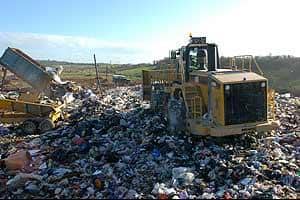Defra has today (December 6) revealed that the most important factor it considered when deciding which waste projects should have their PFI funding cut in October 2010's Spending Review was the progress they had made in contract procurement and securing planning permission.
Seven projects had their PFI money withdrawn as part of the department's move to reduce its budget by 29% by 2014/15, with another 11 escaping the chop (see letsrecycle.com story).
But, it has now revealed exactly how the marking system for the projects was formulated and weighted, with the deliverability of the project identified as the most important factor in its ranking system, with 50% of the weighting.
This meant a project that had appointed a preferred bidder and gained planning consent would score highest and those with no consents and pre-competitive dialogue achieving the lowest score.
The department then applied 40% of its evaluation weighting to the benefits a project could deliver – in terms of diverting waste from landfill – against the level of PFI credit provisionally awarded to it.
And, 10% of the ranking was based on the number of months remaining until the expected beginning of operations for the projects under consideration.
While the document does not include the specific points awarded to each project, among the projects to have their funding withdrawn, one of the most high profile, the Cheshire contract, had neared the end of its procurement but had faced planning issues with both the final bidders for the deal.
And, the largest contract to be affected – the North London Waste Authority's £4 billion deal – was relatively early in its procurement process when the announcement was made, although much of the development is set to be focused on existing waste sites (see letsrecycle.com story).
Waste capacity
The supporting analysis published today also outlines how the department assessed the residual waste diversion capacity likely to be needed to meet 2020 landfill diversion targets which led to it concluding that the seven projects were no longer required to achieve these goals.
This includes it assuming that England will “narrowly exceed” a 50% household waste recycling rate by 2020 – the goal set by the revised EU Waste Framework Directive – and making a “reasonable assumption” it will be meet a 60% rate for commercial and industrial waste by the same point.
The department explains that it then used this to develop likely waste arisings in 2020 and the capacity needed to treat the waste left after recycling, with a scenario requiring 5.6 million tonnes a year of waste to be treated after landfill allowances had been met seen as most likely.
The department then took into account the risk factor affecting PFI projects in general – with Defra stating they had an overall success rate of 57% – and the two million tonnes of capacity it expects merchant plants to deliver by 2020.
It concluded that, with other council projects – including PFI deals already procured – providing 4.4 million tonnes-a-year of capacity, and the 18 PFI being assessed offering 1.2 million tonnes-a-year, there would be 7.6 million tonnes-a-year of biodegradable municipal waste capacity.












Subscribe for free